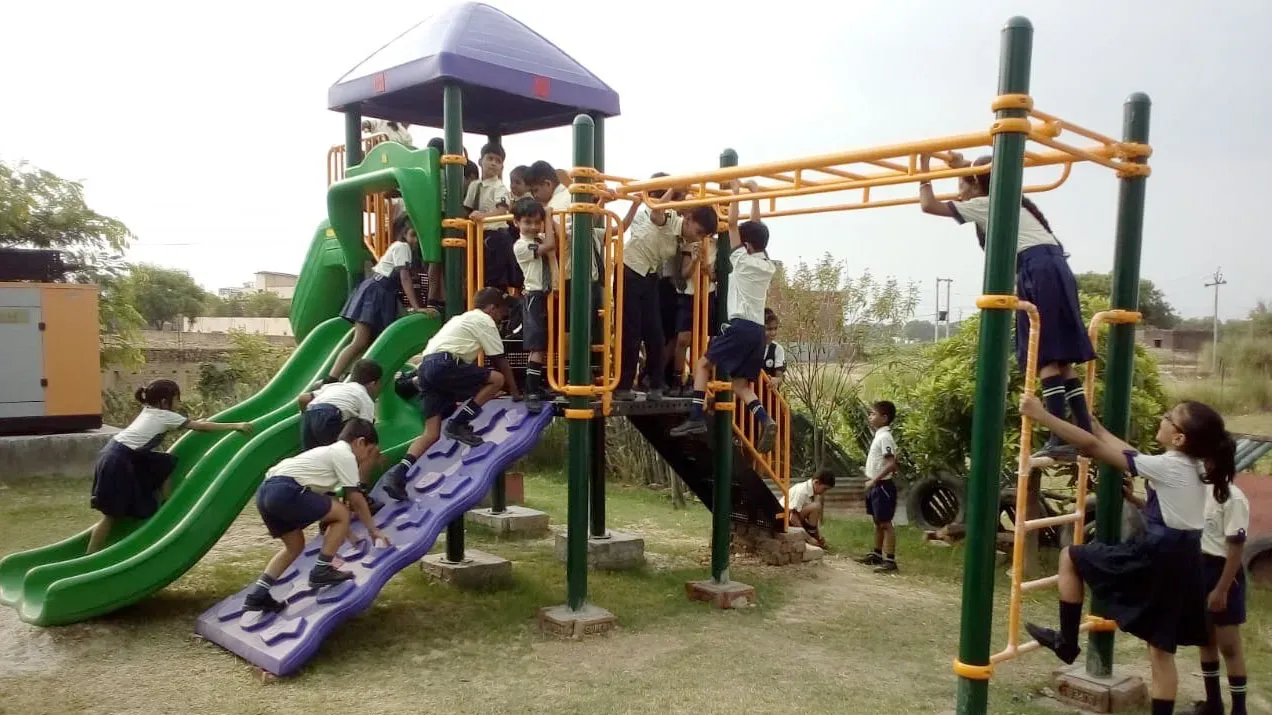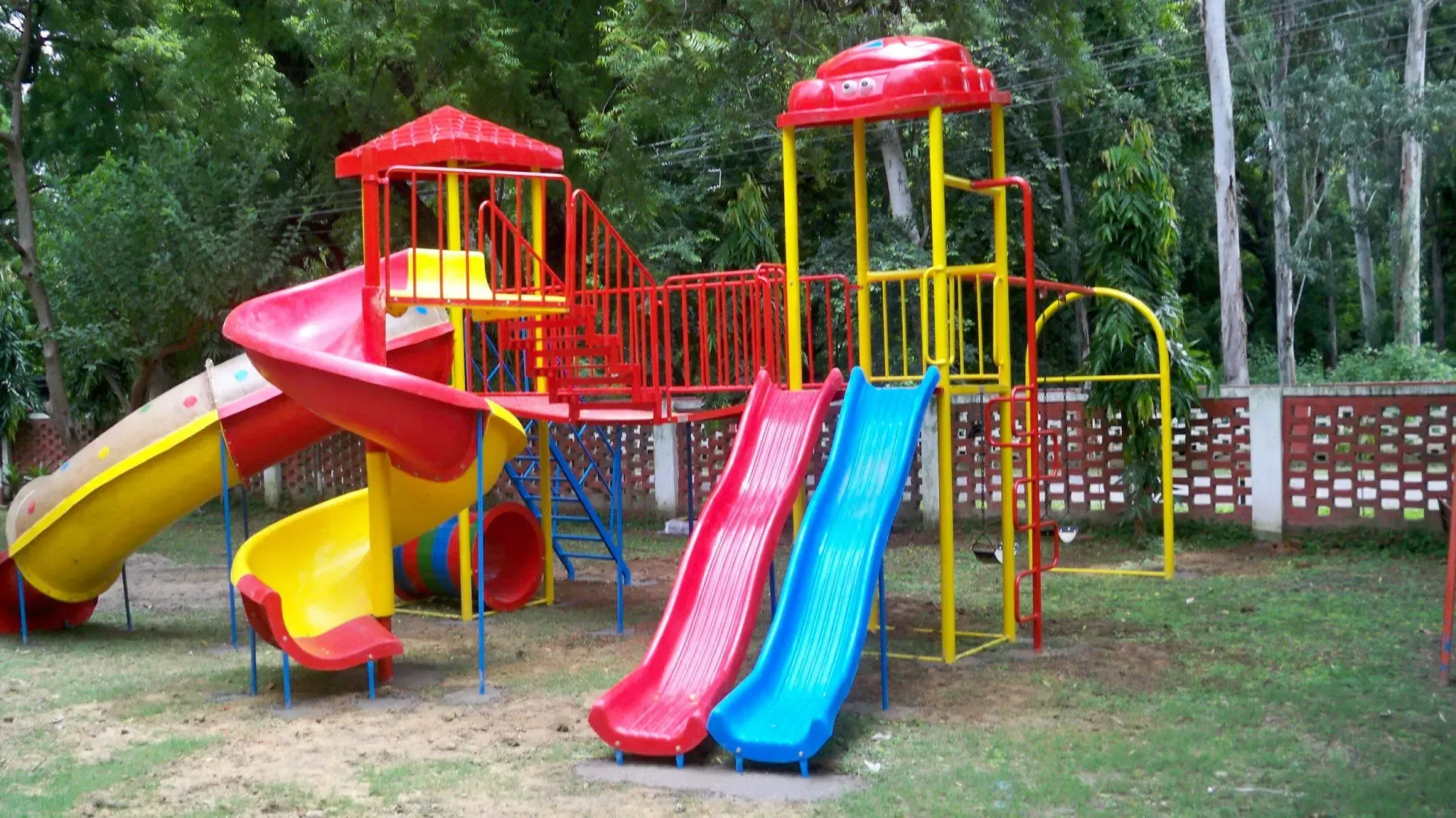Table of Contents
Building a great playground feels simple enough, right? You picture happy kids swinging high, maybe a few tackling a climbing wall. Then you start looking at the actual equipment, and suddenly it’s not so simple. Safety standards, materials, durability – the list grows faster than a weed in July. That's where finding the right outdoor playground equipment suppliers becomes less of a shopping trip and more of a critical decision. It's not just about comparing catalogs; it's about partnering with a company that understands the stakes involved in creating a safe, engaging space for children.
Finding the Right Outdoor Playground Equipment Suppliers

Finding the Right Outdoor Playground Equipment Suppliers
so you've decided it's time to build that playground. Exciting stuff! But before you get lost in visions of monkey bars and slides, the very first, and arguably most critical, step is Finding the Right Outdoor Playground Equipment Suppliers. This isn't like picking a coffee shop; the quality and safety of what they provide directly impact the kids using it. You're not just buying metal and plastic; you're investing in childhood memories and physical development. Getting this wrong means headaches down the line, from rusty bolts to non-compliant heights. It pays, big time, to do your homework upfront and not just grab the first catalog that lands on your desk. Think of it as building the foundation before you even start framing the walls.
Key Features to Look for in Safe Playground Equipment

Key Features to Look for in Safe Playground Equipment
Standards Aren't Just Suggestions
Alright, so you've got a handle on finding the vendors. Now, let's talk brass tacks: what makes the actual equipment safe? This isn't the time to cut corners or go for the cheapest option because it "looks fine." The absolute non-negotiable starting point is compliance with safety standards. In the US, that primarily means ASTM F1487 and CPSC guidelines. Any reputable outdoor playground equipment suppliers won't just *say* they meet these; they'll have documentation, certification numbers, and probably bore you with the details if you let them. Think impact attenuation (that fancy term for how well the surface absorbs a fall), guardrail heights, spacing between bars – tiny details that prevent big injuries. If a supplier shrugs when you ask about ASTM certification, walk away. Fast.
Materials and Pinch Points Matter
Beyond the numbers and standards, get tactile. Look at the materials used. Are they durable? Will they splinter, rust, or get ridiculously hot in the sun? Powder-coated steel is pretty standard, but check the thickness and finish. Plastic components should be UV-resistant and sturdy, not flimsy stuff that cracks after a season. And here's a fun game: play "find the pinch point." Imagine tiny fingers or clothing getting caught. Slides need proper run-out areas, swings need safe clearance zones, and anything with moving parts needs careful inspection. Good design anticipates how kids will *actually* use the equipment, which is often not how the manual says they should.
So, what are some key certifications to keep an eye out for when talking to outdoor playground equipment suppliers?
- ASTM F1487: Standard Consumer Safety Performance Specification for Playground Equipment for Public Use. This is the big one for overall equipment safety.
- CPSC Handbook for Public Playground Safety: Guidelines from the U.S. Consumer Product Safety Commission. Suppliers should follow these recommendations.
- IPEMA Certification: The International Play Equipment Manufacturers Association offers a third-party certification program verifying that equipment meets ASTM standards. It's a good sign if a supplier has this.
Comparing Outdoor Playground Equipment Suppliers on Quality and Compliance

Comparing Outdoor Playground Equipment Suppliers on Quality and Compliance
Beyond the Shiny Brochure: Assessing Real Quality
you've got a shortlist of outdoor playground equipment suppliers. They all have slick websites and catalogs overflowing with smiling kids. Now comes the gritty part: figuring out who actually delivers quality. Quality isn't just about how pretty the paint is on day one. It's about the thickness of the steel, the type of fasteners used, how well the plastics resist fading and cracking under brutal sun, and the overall structural integrity. Ask about their manufacturing process. Do they build everything in-house, or do they source parts from who-knows-where? Can they provide references from previous clients who've had the equipment for several years? A supplier confident in their quality won't hesitate to connect you with someone who can give you the unvarnished truth about how their stuff holds up after a few thousand hours of energetic play.
Show Me the Papers: Verifying Compliance Claims
Anyone can *say* they meet safety standards. Your job is to make them prove it. When comparing outdoor playground equipment suppliers, demand documentation. Ask for copies of their ASTM and CPSC compliance certificates. If they claim IPEMA certification, verify it on the IPEMA website – don't just take their word for it. Push them on the specifics: How do *their* designs address critical fall heights? What kind of safety surfacing do they recommend for *their* specific equipment? A supplier who knows their stuff will be able to articulate exactly how their products meet or exceed these benchmarks, not just hand you a generic certificate. If they get cagey or vague when you ask for specifics on compliance, consider that a major red flag flapping in the breeze.
When you're comparing options, keep these points front and center:
- Ask for client references, especially those with older installations.
- Inquire about the manufacturing process and material sourcing.
- Request specific documentation for ASTM, CPSC, and IPEMA compliance.
- Get details on how their equipment meets critical safety requirements (fall zones, pinch points, etc.).
- Compare warranty details – a strong warranty often signals confidence in quality.
Questions to Ask Potential Outdoor Playground Equipment Suppliers

Questions to Ask Potential Outdoor Playground Equipment Suppliers
Digging into Their Experience and Safety Credentials
you've narrowed down the field of outdoor playground equipment suppliers. Now, it's time to get them talking. Don't just ask for a price list. You need to probe. Start with the basics, but push for specifics. How long have they been in business? Who designed their equipment, and what's their philosophy on play and safety? Ask about their track record – can they point to installations that have stood up to years of abuse in high-traffic areas like schools or public parks? Get them to explain their safety testing procedures, not just hand you a certificate. Any supplier worth their salt will be transparent about how they ensure their equipment meets or exceeds current standards. If they seem hesitant or give vague answers about their history or safety protocols, that should set off alarm bells. You're entrusting them with kid safety, after all.
Getting Down to the Nitty-Gritty: Installation and Support
Beyond the shiny metal and plastic, the practical stuff matters just as much. How do these outdoor playground equipment suppliers handle installation? Do they have their own certified installers, or do they subcontract? If it's the latter, who are they using, and what are their qualifications? Ask about the timeline for delivery and installation – unexpected delays can mess up your whole project schedule. And what happens after the equipment is in the ground? What kind of warranty do they offer on different components? A lifetime warranty on steel is great, but what about the decks, slides, and moving parts? What kind of customer support do they provide if a part breaks or you have a question down the road? A supplier who disappears after the check clears isn't a partner; they're just a vendor, and often not a good one.
Here are a few crucial questions to keep handy:
- Can you provide references from clients with installations older than five years?
- Describe your internal safety testing procedures.
- Do you use your own certified installation crews or subcontractors?
- What is your typical timeline from order to completed installation?
- Provide a detailed breakdown of your warranty coverage by component.
- What kind of post-installation support and parts availability do you offer?
Working with Outdoor Playground Equipment Suppliers: Installation and Ongoing Support
Getting the Playground from Box to Ground
you've picked your equipment, signed the contract, and the trucks are showing up. This is where the rubber meets the road, or rather, the steel meets the ground. The installation process with outdoor playground equipment suppliers isn't just about bolting things together; it's about ensuring everything is level, secure, and meets those critical fall height requirements. Did your supplier send their own certified crew, or did they hand it off to a local contractor you've never heard of? There’s a world of difference there. A dedicated crew knows the equipment inside and out, anticipating quirks and potential snags. Subcontractors might be cheaper, but you run the risk of missteps that compromise safety or durability down the line. Make sure you have a clear timeline and understanding of site prep requirements – you don't want installers showing up only to find the ground isn't ready.
What Happens After the Installers Leave?
The playground looks fantastic, the ribbons are cut, and the kids are swarming. Great! But your relationship with your outdoor playground equipment suppliers shouldn't end there. What happens six months later when a swing chain shows wear, or a bolt comes loose? This is where post-installation support kicks in. A good supplier offers a solid warranty, not just on the steel uprights that will outlast us all, but on the parts that actually see wear and tear – the plastics, the moving components, the coatings. Ask about their process for ordering replacement parts. Is it a nightmare of phone calls and forms, or can you easily get what you need? Reliable customer service after the sale is a non-negotiable. You aren't buying a disposable toy; you're managing an asset that needs care.
Key Post-Installation Considerations:
- Detailed warranty coverage by component type.
- Clear process for ordering replacement parts.
- Availability of repair guides or technical support.
- Information on recommended maintenance schedules.
- Emergency contact for significant issues.
Building a Relationship Beyond the Sale
Think of your outdoor playground equipment suppliers as more than just a transaction. The really good ones become partners. They'll follow up, offer maintenance tips, and maybe even provide training for your staff on routine checks. I once dealt with a supplier who, after a particularly harsh winter, proactively reached out to check on installations in the region and offer advice on inspecting for frost heave damage. That's the kind of service that builds trust and saves you headaches. They understand that a well-maintained playground is a testament to their quality, and they have a vested interest in its longevity. Don't settle for a company that treats you like a one-time sale; find one that invests in the ongoing success and safety of your playground.
Making the Final Call on Playground Suppliers
Selecting outdoor playground equipment suppliers isn't just about checking price tags. It's about digging into their safety records, understanding their materials, and confirming they offer solid support long after the invoice is paid. A cheap swing set that breaks in a year isn't a bargain; it's a headache and a liability. By focusing on these key areas – safety compliance, material quality, installation expertise, and reliable customer service – you stack the deck in favor of creating a playground that’s not only fun but genuinely durable and safe for years to come. Do your homework, ask the tough questions, and partner with a supplier who takes play as seriously as you do.